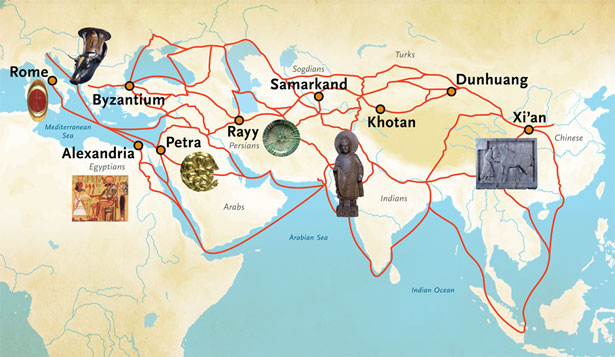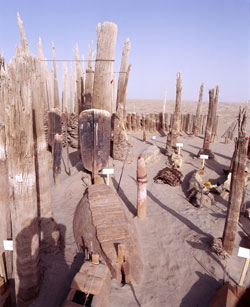Exhibit Introduction


Xiaohe Modi (Little River) Cemetery 5 in situ, ca 1800-1500 BCE. Charqilik (Ruoqiang) County, Xinjiang Uygur Autonomous Region, China. © Xinjiang Institute of Archaeology
Beginning in the late 20th century, a series of remarkable discoveries was made in the barren far western part of modern-day China. These ancient sites at the crossroads of the legendary Silk Road revealed extraordinarily well-preserved mummies of unknown people, some of whom are nearly 4,000 years old. But even more striking than their exquisite preservation was the mystery of who they were. Rather than the expected appearance of the Chinese, these mummies exhibit Caucasoid features, suggesting they may be of European or western Eurasian descent.
Who were they and how did they come to be buried in this remote landscape? Were they merely travelers who met an unfortunate end on their journeys? Or were they the early settlers of Eastern Central Asia, whose origins remain a mystery? In studying the objects left behind by these people, we can begin to unravel some of the secrets of the Silk Road.














